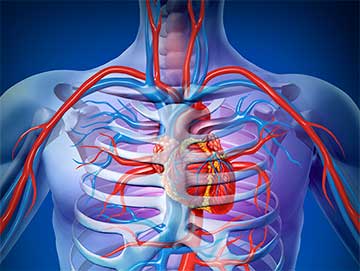Newly
Triglycerides, total cholesterol, HDL cholesterol, LDL cholesterol, cholesterol/HDL ratio, non-HDL cholesterol, lipoprotein (a), apolipoprotein B, LDL particle number, peak size, pattern, HDL large, LDL small and medium are all markers of cholesterol metabolism and are used in clinical practice to assess cardiovascular risk.
Triglycerides: Triglycerides are a type of fat that circulate in the blood. Elevated levels of triglycerides are associated with an increased risk of heart disease.
Total cholesterol: Total cholesterol measures the amount of cholesterol in the blood, including both LDL and HDL cholesterol.
HDL cholesterol: HDL cholesterol, also known as "good" cholesterol, helps remove cholesterol from the bloodstream and is associated with a lower risk of heart disease.
LDL cholesterol: LDL cholesterol, also known as "bad" cholesterol, can build up in the walls of arteries, leading to atherosclerosis and an increased risk of heart disease.
Cholesterol/HDL ratio: The cholesterol/HDL ratio is calculated by dividing total cholesterol by HDL cholesterol. A higher ratio is associated with an increased risk of heart disease.
Non-HDL cholesterol: Non-HDL cholesterol includes all types of cholesterol except HDL cholesterol. Elevated levels of non-HDL cholesterol are associated with an increased risk of heart disease.
Lipoprotein (a): Lipoprotein (a) is a type of LDL cholesterol that is associated with an increased risk of heart disease.
Apolipoprotein B: Apolipoprotein B is a protein found on LDL cholesterol particles. Elevated levels of apolipoprotein B are associated with an increased risk of heart disease.
LDL particle number: LDL particle number measures the number of LDL cholesterol particles in the blood. Elevated levels of LDL particle number are associated with an increased risk of heart disease.
Peak size and pattern: The size and pattern of LDL cholesterol particles can also provide information about cardiovascular risk. Small, dense LDL particles are associated with an increased risk of heart disease.
HDL large: HDL large particles are associated with a lower risk of heart disease.
LDL small and medium: LDL small and medium particles are associated with an increased risk of heart disease
Click here to search for affliated direct lab draw stations near you.
Healthy Blood Vessels - The Advanced Lipid Panel with Lp(a)!
USD 175.00
Product description
Tested biomarkers include:Triglycerides, total cholesterol, HDL cholesterol, LDL cholesterol, cholesterol/HDL ratio, non-HDL cholesterol, lipoprotein (a), apolipoprotein B, LDL particle number, peak size, pattern, HDL large, LDL small and medium are all markers of cholesterol metabolism and are used in clinical practice to assess cardiovascular risk.
Triglycerides: Triglycerides are a type of fat that circulate in the blood. Elevated levels of triglycerides are associated with an increased risk of heart disease.
Total cholesterol: Total cholesterol measures the amount of cholesterol in the blood, including both LDL and HDL cholesterol.
HDL cholesterol: HDL cholesterol, also known as "good" cholesterol, helps remove cholesterol from the bloodstream and is associated with a lower risk of heart disease.
LDL cholesterol: LDL cholesterol, also known as "bad" cholesterol, can build up in the walls of arteries, leading to atherosclerosis and an increased risk of heart disease.
Cholesterol/HDL ratio: The cholesterol/HDL ratio is calculated by dividing total cholesterol by HDL cholesterol. A higher ratio is associated with an increased risk of heart disease.
Non-HDL cholesterol: Non-HDL cholesterol includes all types of cholesterol except HDL cholesterol. Elevated levels of non-HDL cholesterol are associated with an increased risk of heart disease.
Lipoprotein (a): Lipoprotein (a) is a type of LDL cholesterol that is associated with an increased risk of heart disease.
Apolipoprotein B: Apolipoprotein B is a protein found on LDL cholesterol particles. Elevated levels of apolipoprotein B are associated with an increased risk of heart disease.
LDL particle number: LDL particle number measures the number of LDL cholesterol particles in the blood. Elevated levels of LDL particle number are associated with an increased risk of heart disease.
Peak size and pattern: The size and pattern of LDL cholesterol particles can also provide information about cardiovascular risk. Small, dense LDL particles are associated with an increased risk of heart disease.
HDL large: HDL large particles are associated with a lower risk of heart disease.
LDL small and medium: LDL small and medium particles are associated with an increased risk of heart disease
Click here to search for affliated direct lab draw stations near you.
You may also like

Clearblue Graviditetstest 1 stk
NOK 179.9

The Blackening Tee
USD 36

Magnitogorsk Magnet
USD 6

MONSOON 2.0 - 75300A - FACET
EUR 139

INTELLECTUAL PROPERTY HOODIE
USD 100

ZX 5K Boost
EUR 110.4

BloomsBox 'Gefeliciteerd' - L
EUR 28.88

120 kapsułek kawy Caffè Crema Mild
PLN 199.99

JCB Tough Tablet
GBP 699.99








